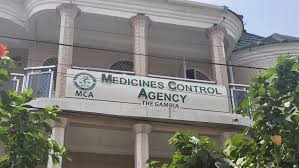By: Momodou Justice Darboe
A huge chunk of the urban population has been grappling with what has been described in some quarters as the “cost-of-medicines crisis” as medicine prices shoot up uncontrollably each passing day.
The Director of the Medicines Control Agency (MCA), Dr. Essa Marenah, earlier this year told this reporter that his agency had no powers to regulate the price of medicinal products.
However, calls for the MCA and relevant authorities to rise to the occasion have been growing louder.
Currently, The Gambia has no framework in place to regulate medicine prices thus giving some unscrupulous pharmacy owners to attach unbearable costs to their products.
The disparity between the prices of medicines at different pharmacies has been stark, leading to calls for the harmonization of medicine prices.
At the time of writing this story, the prices of some medicinal products have increased two-fold or more. This jump in prices has been causing hardship for the less-privileged members of the society.
“The Philobact that I used to buy for D75 has now jumped to D150,” one Saihou Jobe told this reporter.
Another man Batch Barry said: “The price of Cabomapazine strip that used to cost D75 has now increased to D150.”
Other pharmaceutical products have also had their prices increased.
Dorzolamide timolol eye drops that used to be sold at the pharmacy price of D300 are now sold at D1000 at some pharmacies. The price of Lumigan eye drops, which was hovering around D300, has also shot up to the region of D1000.
A similar increase has been made in other drugs.
“Prescription form is increasingly becoming a death warrant. I always recoil with fear whenever I’m given one,” a certain Abdoulie Manneh explained to this reporter.
Many Gambians and residents of the country, who spoke to this reporter, called on the central government to salvage the population from the “cost-of-medicines-crisis”, which has now become a millstone on the neck of the struggling population.





